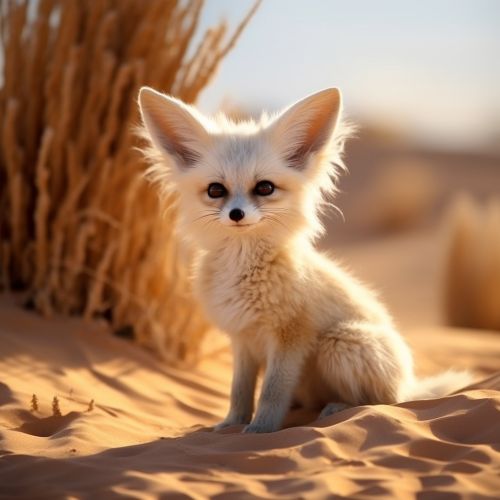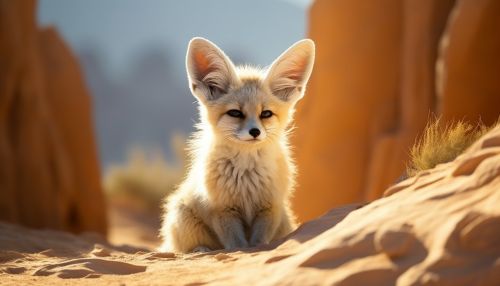Fennec Fox
Taxonomy and Evolution
The Fennec Fox (Vulpes zerda) is a small, nocturnal fox found in the Sahara Desert and the Sinai Peninsula. It is the smallest species of the family Canidae, which includes wolves, foxes, jackals, and domestic dogs. The Fennec Fox is classified within the genus Vulpes, which comprises twelve species of "true foxes". The species name zerda comes from the Greek word xeros, which means dry, referring to the fox's habitat.
The Fennec Fox is thought to have evolved during the Miocene Epoch, between 23.03 to 5.333 million years ago. The harsh desert environment shaped its evolution, leading to its distinctive features such as large ears and a sandy coloration that provides camouflage.
Physical Characteristics
The Fennec Fox is known for its distinctive, oversized ears, which can measure up to 15 centimeters in length. These ears serve a dual purpose: they help the fox dissipate heat and detect prey moving underground. The fox's coat is thick and provides insulation during cold desert nights, while its sandy color helps it blend into its desert surroundings.
The Fennec Fox weighs between 0.68 to 1.59 kg, with body length ranging from 24 to 41 cm. It has a bushy, black-tipped tail that is about 20 cm long. The fox's feet are covered with thick fur that provides protection from the hot sand.
Behavior and Ecology
The Fennec Fox is a nocturnal creature, spending the day in burrows that can be up to 120 cm deep. These burrows provide shelter from the harsh desert heat. At night, the fox emerges to hunt for food. Its diet primarily consists of insects, small mammals, birds, eggs, and plant matter. The Fennec Fox has a high metabolic rate and can survive without free water for extended periods, obtaining necessary moisture from its food.
Fennec Foxes are social animals, living in family groups of up to ten individuals. These groups are composed of a monogamous pair and their offspring. The foxes communicate through a range of vocalizations, including barks, chatters, and howls.
Reproduction and Lifespan
The breeding season of the Fennec Fox occurs between January and February. After a gestation period of about 50 days, the female gives birth to a litter of two to five kits. The male assists in rearing the young, bringing food to the den and defending it from intruders.
The kits are weaned at around 61 to 70 days and reach sexual maturity at around nine months. The lifespan of a Fennec Fox in the wild is up to 10 years, but in captivity, they can live up to 14 years.
Conservation Status
The Fennec Fox is listed as "Least Concern" on the IUCN Red List due to its wide distribution and presumed large population. However, the fox is threatened by habitat loss due to desertification, human encroachment, and climate change. It is also hunted for its fur in some parts of its range.
In Culture
The Fennec Fox is a common symbol in the folklore and mythology of the indigenous peoples of North Africa. It is often depicted as a cunning and intelligent creature in these stories. In recent years, the Fennec Fox has gained popularity as an exotic pet, although this practice is controversial due to concerns about animal welfare and the potential for negative impacts on wild populations.


